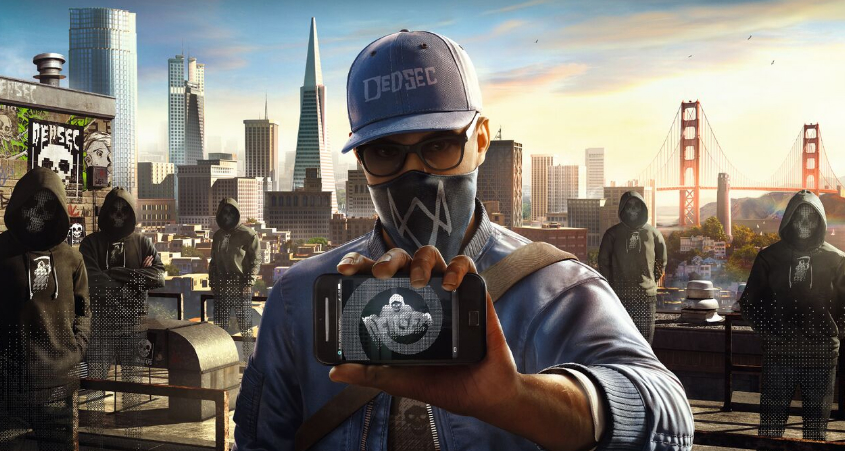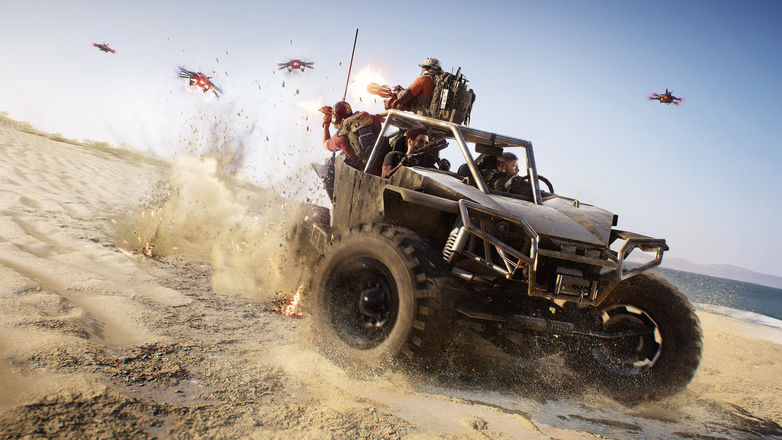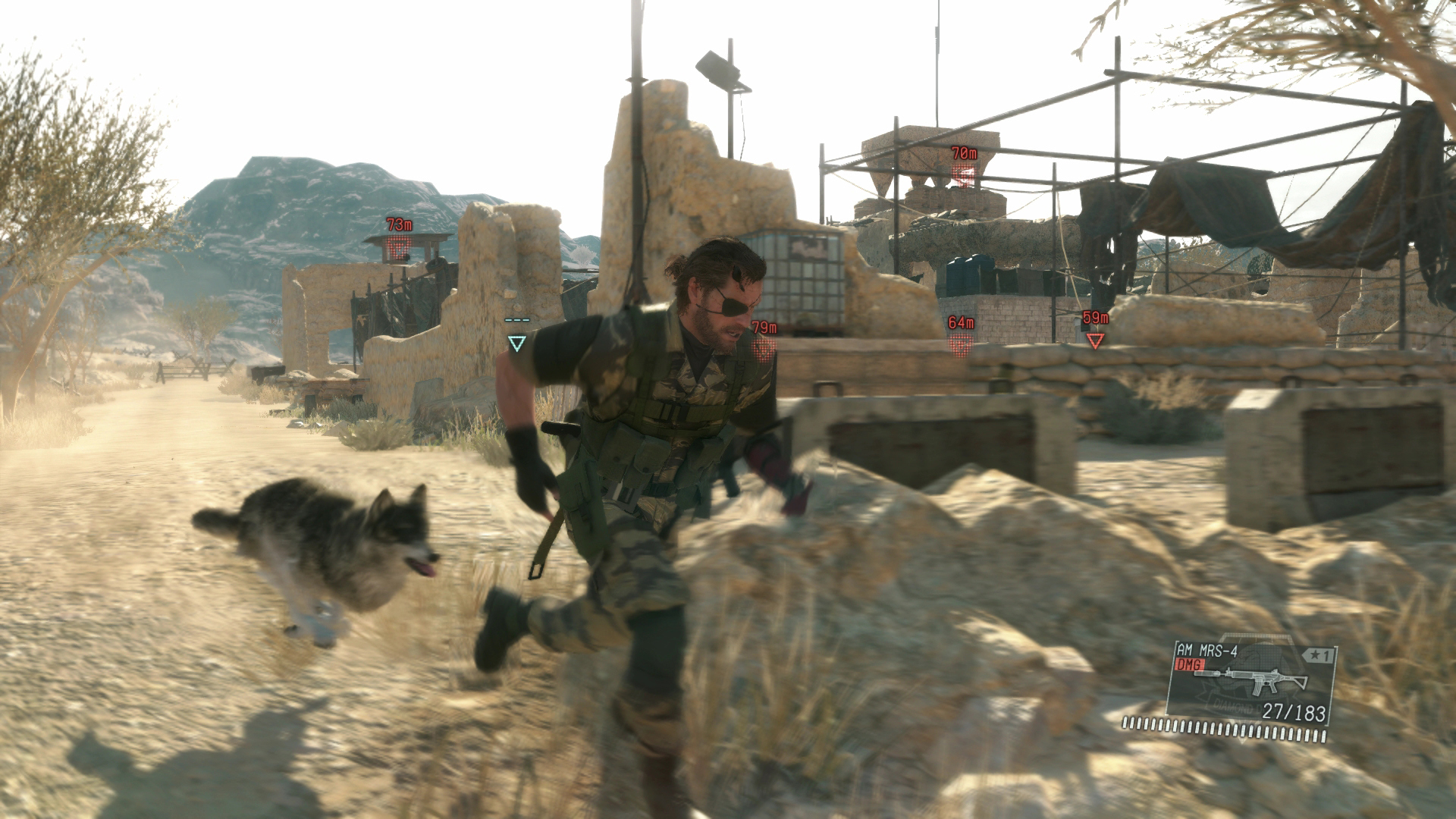
Modern game development is absurdly expensive. Creating the vast, detailed open worlds that have become the staple genre of this generation is a huge drain upon cashflow, resources, and people. Developers and publishers have different ways of coping with this.
Some rely on crunch, although this practice is increasingly in the spotlight for the harm it causes to the people who make the games we play. Others, like EA, have attempted to standardise its tech across the company, ensuring everyone is working with the same engine and thus making it easier to share knowledge and resources between projects. As demonstrated by the technical issues encountered by Anthem during development, however, this too has its drawbacks.
Ubisoft tries to make life easier for itself not by sharing general tech, but specific systems. You’ll often see an idea, system or object from Assassin’s Creed crop up in, say, Far Cry or vice-versa. Often these elements are small, like the drone from the Division appearing in Watch Dogs and Ghost Recon. Occasionally, they’re much bigger, such as the topographical map from Far Cry 4 being re-used in Far Cry Primal.

In principle, I’m in favour of this kind of cross-game asset sharing. Ultimately, it’s the core experience that matters, and if adopting ideas or even entire systems from one game into another contributes to improving that experience, then what’s to complain about? There are plenty of examples in Ubisoft games where this is the case. Take Watch Dogs 2, in which one of your key gadgets is a little RC car that you can use to remotely hack devices. This RC car is adapted from those used during the planning phase of Rainbow Six: Siege.
It’s this car, alongside the drone Watch Dogs 2 borrows from the Division, that makes the game sing. Using these remote devices to hack into security systems, all while sat in a nice San Francisco park, communicates the game’s fantasy of being a hacker in a way the original Watch Dogs never did. It makes far more sense to approach the game’s many environmental puzzles through using gadgets rather than guns, and the way Ubisoft use these already-existing assets and systems is what makes Watch Dogs feel distinctive as an open world game.
This only works because the adopted assets and mechanics are harmonious with the game’s theme. But Ubisoft has a tendency to re-use ideas and mechanics ad-nauseum, with scant regard for what works, what doesn’t, and what a game actually needs. Assassin’s Creed went ten years without a proper sneak button, in which time Ubisoft added guns, a co-operative mode, and pirate ships to the series.
Ubisoft’s recycling of ideas recently reached its nadir with Ghost Recon Breakpoint. Breakpoint already had its work cut out due to the mediocrity of Wildlands, which was about as generic an open world game as it is possible to make. The idea of an open-world tactical shooter is a good one, but, as with several other Ubisoft games, the focus was on making the open world as large and stuffed full of activities as possible, rather than building a world that suited the premise.
Keep up to date with the most important stories and the best deals, as picked by the PC Gamer team.

This is the problem that Breakpoint needed to fix. Instead, Ubisoft basically released the same game again, only with additional systems scavenged from other projects and awkwardly stapled to Breakpoint’s head. These included the conversation system from Assassin’s Creed, and the loot system from The Division. I can’t speak for everyone but, as a fan of tactical shooters, conversations and loot ranked pretty low on my list of things I wanted to see in Ghost Recon.
Ideally, Ghost Recon would provide a new experience unique to itself. But what’s particularly frustrating about Breakpoint is there are several games Ubisoft could have borrowed from that would likely have improved it. One of these is within Ubisoft’s own stable, Rainbow Six Siege. A fantastic tactical shooter, Rainbow Six siege has multiple ideas that could adapt well to an open world, such as its breaching mechanics, and the ability to deploy cover and barricades.
The other major reference point is Metal Gear Solid V, which is probably the best tactical shooter ever made. Aside from having a ridiculous level of depth and nuance to its systems, one of the best things about MGSV is its “tactical ops” concept. Instead of being persistently embedded in the game’s open world, you’re based on a remote oil platform, and fly into each mission separately. Each mission begins with a planning phase where you select your equipment, companions, vehicles and so forth, after which you’re deployed into the map for infiltration.

Then, once you’ve successfully completed the objective, you call for an extraction, and it isn’t until you’ve successfully extracted that the mission ends. In other words, it treats every mission like a mission, rather than a point on a map to be checked off. It creates mechanics that match the theme, rather than taking an existing structure and making the theme fit around it.
This is where Breakpoint, and many other Ubisoft games, fall down. Borrowing mechanics and assets from other games only works if they’re thematically consistent in the game in question. Even good Ubisoft games suffer from this problem. Assassin’s Creed Odyssey was one of my favourite games of last year, but I still struggle to understand why a game about assassinating people features a level-gating system that often makes it impossible to actually assassinate people. If I drop onto somebody’s back and stab them in the jugular with a spearhead, the appropriate response to that is to die, not “Hulk-out and alert every other guard in the camp to my presence”.
I’ve enjoyed many of Ubisoft’s open world games. But “open world” is not a baseline from which a game should be conceived. Instead, the open world should be treated like a mechanic in and of itself, a specific tool that facilitates and communicates whatever broader concept you had in the first place. Ultimately, this is why so many Ubisoft games feel the same despite having very divergent settings. The open world seems to come first, and everything else comes after.
Rick has been fascinated by PC gaming since he was seven years old, when he used to sneak into his dad's home office for covert sessions of Doom. He grew up on a diet of similarly unsuitable games, with favourites including Quake, Thief, Half-Life and Deus Ex. Between 2013 and 2022, Rick was games editor of Custom PC magazine and associated website bit-tech.net. But he's always kept one foot in freelance games journalism, writing for publications like Edge, Eurogamer, the Guardian and, naturally, PC Gamer. While he'll play anything that can be controlled with a keyboard and mouse, he has a particular passion for first-person shooters and immersive sims.

